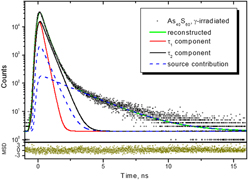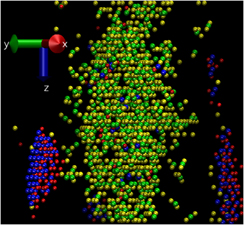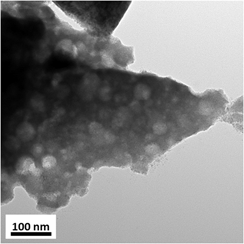Focus Issue: Characterization and Modeling of Radiation Damage on Materials: State of the Art, Challenges, and Protocols
Articles
Characterization of radiation-induced effects in amorphous arsenic sulfides by positron annihilation lifetime spectroscopy
-
- Published online by Cambridge University Press:
- 27 January 2015, pp. 1422-1429
-
- Article
- Export citation
Radiation effects on the magnetism and the spin dependent transport in magnetic materials and nanostructures for spintronic applications
-
- Published online by Cambridge University Press:
- 11 February 2015, pp. 1430-1439
-
- Article
- Export citation
Invited Review
Modeling defect cluster evolution in irradiated structural materials: Focus on comparing to high-resolution experimental characterization studies
-
- Published online by Cambridge University Press:
- 02 March 2015, pp. 1440-1455
-
- Article
- Export citation
Articles
Atomistic modeling of radiation-induced disordering and dissolution at a Ni/Ni3Al interface
-
- Published online by Cambridge University Press:
- 20 January 2015, pp. 1456-1463
-
- Article
- Export citation
Comparison of two tungsten–helium interatomic potentials
-
- Published online by Cambridge University Press:
- 28 January 2015, pp. 1464-1472
-
- Article
- Export citation
Characterization of swift heavy ion irradiation damage in ceria
-
- Published online by Cambridge University Press:
- 04 March 2015, pp. 1473-1484
-
- Article
- Export citation
Examination of the impact of electron–phonon coupling on fission enhanced diffusion in uranium dioxide using classical molecular dynamics
-
- Published online by Cambridge University Press:
- 10 February 2015, pp. 1485-1494
-
- Article
- Export citation
Invited Review
Characterization of radiation damage in ceramics: Old challenge new issues?
-
- Published online by Cambridge University Press:
- 13 April 2015, pp. 1495-1515
-
- Article
- Export citation
Reviews
Ion-beam irradiation and 244Cm-doping investigations of the radiation response of actinide-bearing crystalline waste forms
-
- Published online by Cambridge University Press:
- 16 February 2015, pp. 1516-1528
-
- Article
- Export citation
Ion tracks in amorphous silica
-
- Published online by Cambridge University Press:
- 13 April 2015, pp. 1529-1543
-
- Article
- Export citation
Articles
TEM study of alpha-damaged plutonium and americium dioxides
-
- Published online by Cambridge University Press:
- 04 March 2015, pp. 1544-1554
-
- Article
- Export citation
Annealing-induced lattice recovery in room-temperature xenon irradiated CeO2: X-ray diffraction and electron energy loss spectroscopy experiments
-
- Published online by Cambridge University Press:
- 10 February 2015, pp. 1555-1562
-
- Article
- Export citation
Gamma irradiation resistance of an early age slag-blended cement matrix for nuclear waste encapsulation
-
- Published online by Cambridge University Press:
- 03 February 2015, pp. 1563-1571
-
- Article
- Export citation
In situ characterization of ion-irradiation enhanced creep of third generation Tyranno SA3 SiC fibers
-
- Published online by Cambridge University Press:
- 10 February 2015, pp. 1572-1582
-
- Article
- Export citation
Damage accumulation in diamond during ion implantation
-
- Published online by Cambridge University Press:
- 12 February 2015, pp. 1583-1592
-
- Article
- Export citation
Front Cover (OFC, IFC) and matter
JMR volume 30 issue 9 Cover and Front matter
-
- Published online by Cambridge University Press:
- 20 May 2015, pp. f1-f7
-
- Article
-
- You have access
- Export citation
Back Cover (OBC, IBC) and matter
JMR volume 30 issue 9 Cover and Back matter
-
- Published online by Cambridge University Press:
- 20 May 2015, pp. b1-b4
-
- Article
-
- You have access
- Export citation
















